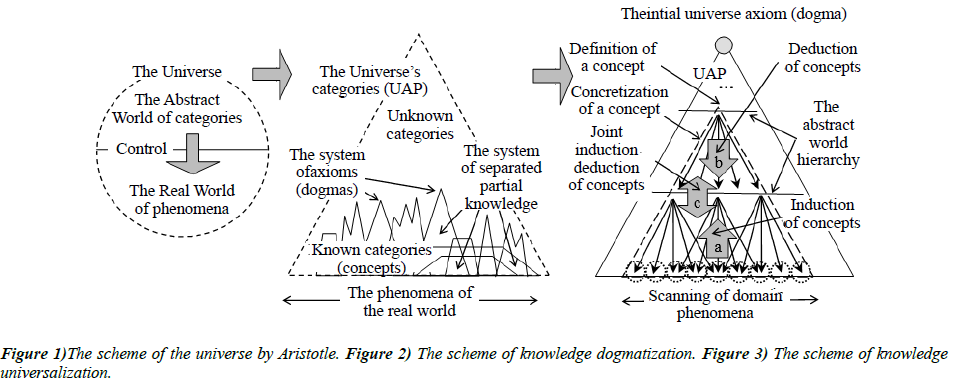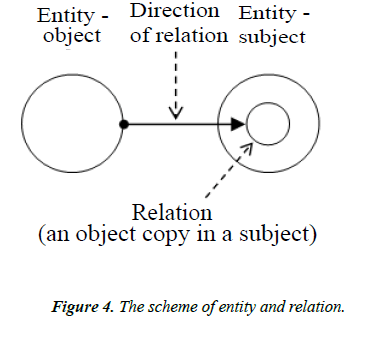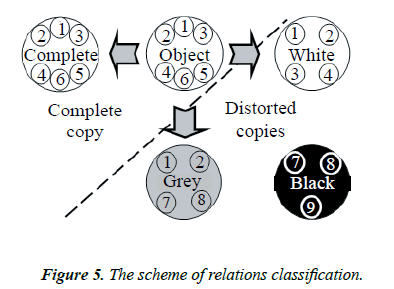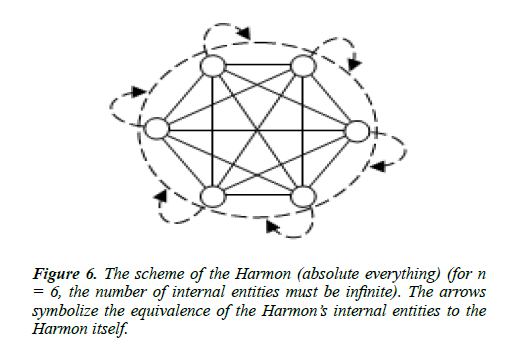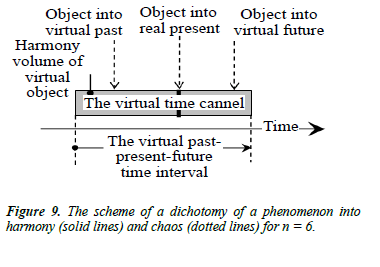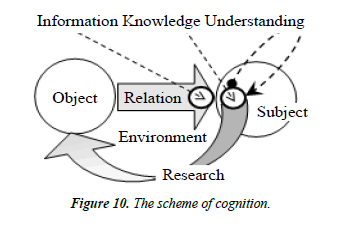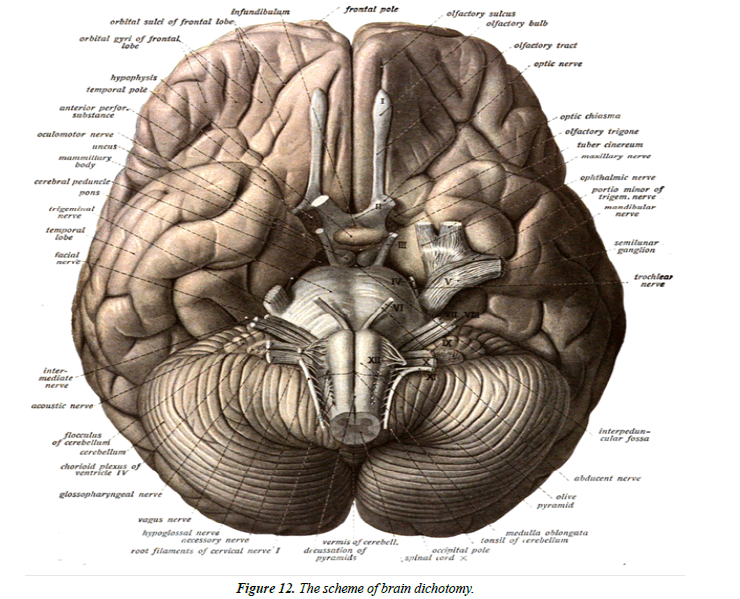Commentary - Journal of Applied Mathematics and Statistical Applications (2018) Volume 1, Issue 2
The universal theory as a new general scientific paradigm
- *Corresponding Author:
- Alexander V Sosnitsky
Department of Computer Technologies Berdyansk State Pedagogical University 4, Schmidt street, Berdyansk Ukraine
Tel: +380665093093
E-mail: sosnitsky.ukr@yandex.ua
Accepted date: October 01, 2018
Citation: Sosnitsky. The universal theory as a new general scientific paradigm. J Appl Math Statist Appl. 2018;2(1):11-18.
Abstract
This appeal sets forth some modern proposals for a fundamental development of the subject matter of works that may be of scientific interest to a wide range of scientists and specialists. Universal Theory is one of those modern proposals and a challenging and promising paradigm of scientific research and development. The initial formation of the Universal Theory is over, but there is still a huge amount of research and development to accomplish its goals.
Keywords
Universal theory, Theory of sets, Harmonization, Applied mathematics, Statistical applications, Artificial intelligence, Mathematical logic, Space-time-matter complex, Negative entropy.
Introduction
Humanity successfully exists and develops, first of all, thanks to knowledge, for the acquisition and accumulation of which there has arisen and continuously improved the grandiose system of modern science and information, an important role in which is played by a variety of public publishing houses that unite multiple scientific institutions [1].
In connection with the increase in the number of scientists, specialists, organizations and publications and, as a consequence, the volume and complexity of knowledge, the role of scientific publishers is continuously increasing, and the evaluation and ranking of publications is becoming an important factor in the management of science. This raises the importance of an effective choice of scientific topics, goals and objectives, areas and directions, justification and evidence, relevance and novelty, presentation and prospects of results both for publications and authors of publications [2].
Taking advantage of the kind invitation of the editorial board of the respected Journal of Applied Mathematics and Statistical Applications, this appeal sets forth some modern proposals for a fundamental development of the subject matter of works that may be of scientific interest to a wide range of scientists and specialists. It will be a new promising general scientific direction –universalization of knowledge, which follows from the author's latest original research in the field of the theory of cognition and artificial intelligence.
Pending scientific problems of the modern science
Universalization represents a big problem and debatable scientific question, and therefore we will begin with some important pending scientific problems of the modern science.
1. Modern science as a whole is successfully developing, but in its extensive areas of the chronically stagnant formalization of usually complex phenomena are becoming more and more noticeable, in which even "points of formal entry" are missing, which indicates fundamental insurmountable within its framework general scientific shortcomings [3]. The identification and overcoming of such shortcomings are the main resource of the further development of science.
2. The main such a problem today is intelligence and its derivatives, for which satisfactory formalisms and even initial definitions have not been obtained. According to strict general scientific concepts, this basically delegitimizes research in this field and science as a whole as a product of exclusively intellectual activity. All attempts to overcome this problem were unsuccessful, which was frankly acknowledged by leading scientists [4]. The formalization of intelligence opens up the possibility of a full legitimation of scientific knowledge.
3. Today, mathematics is considered the main means and criterion of correct formalization, with which it is supposed to coordinate all the theories. However, this is done primarily through deduction that uses already known knowledge and reaches exclusively internal (inherent in the initial concepts) conclusions [5]. Cognition of really new external (not deducible) concepts is performed by induction that has not become a fullfledged regular mathematical tool yet. An effective combination of induction and deduction opens up new possibilities for cognition and formalization.
4. Modern mathematical logic cannot fully determine the original logical actions either, the refinement of which has been continuing so far, according to leading scientists [6]. The British encyclopedia gives frankly unacceptable rather philosophical intuitive literary definitions that cannot be accepted for formal studies. A substantiated deduction of the original logical concepts is an important problem of cognition and formalization.
5. The known K. Godel's theorem of incompleteness (on the example of systems of logical equations) in fact proves the emergence of ambiguity and internal contradictions of any particular formalisms with the growth of their complexity, which in principle closes the possibility of full cognition of complex phenomena [7]. Overcoming the conditions of this theorem opens up new areas of cognition and formalization.
6. Modern science recognizes a priori incomplete cognition and assumes the division of a phenomenon into a cognized and unknown part relative to each subject. However, it uses only knowledge and does not have the theory of lack of knowledge. In fact, ignorance is present in every cognition and is its source that adds new knowledge and thereby continuously changing the direction of logical conclusions, negating the previous directions. The theory of lack of knowledge radically develops the formalization of phenomena.
7. The changing subjective cognition factors are continuously distorting the trajectories of subjective logical conclusions in chaotic causal directions, including mutually opposite ones both for different subjects and one subject in different states of cognition. Therefore, the cognition and existence of subjects is an unstable, multidirectional heterogeneous movement up to the extreme states without a stable state, which in combination with internal and external freedom generates a multivalued conditional formalization of phenomena that surpasses modern general scientific formalisms.
8. The increased instability of complex phenomena destabilizes subjects as knowledge develops, which is evidenced by the known conflict history of the entire living world. Many mythologies and isoteric theories openly testify to the nonlinear cyclic existence of humanity that is experiencing another civilization now. Obviously, this problem is solvable by the development of cognition of our stable universe.
9. The unknown part of phenomena is invisible to the cognizing subject and the existing methodology creates the illusion of fullness of knowledge, which is successively overcome by the divergence from the new cognition, the absence of which is the only criterion of relative truth. However, this scheme is possible only for the available phenomena and is impossible for unavailable especially complex phenomena, which fundamentally limits cognition. The creation of additional links with inaccessible phenomena is an important resource of cognition and formalization.
10. Modern publications are produced exclusively in the form of a text of natural language with a relatively rare inclusion of mathematical formulas, which is a sign of a fundamental incompleteness of formalisms and a lack of knowledge with all the consequences mentioned above. The creation of a single universal formalism and the language of its description will make it possible to present the results with a complex but unified formula, which will make it possible to determine accurately the place of the formalism in the general system of knowledge.
11. Thus, modern science ensures the cognition of exceptionally simple phenomena and the expansion of knowledge to all the most complex universe’s phenomena is a fundamental problem, the resource and prospect of the development of science that are offered to the scientific community instead of an endless solution of the number of local problems that are likely to be particular cases of more developed forms.
Provisions of a new universal general scientific paradigm
Let us consider the main provisions of a new universal general scientific paradigm for solving problems mentioned above.
1. The simplest analysis shows the next main stages of the development of world science (Table 1).
| S. No. | Stages | Main quality |
|---|---|---|
| 1 | Empirical | Accumulation of empirical knowledge |
| 2 | Mythological | Initial formalization of knowledge |
| 3 | Antique | Categorization of knowledge |
| 4 | Dogmatic | Axiomatization of knowledge |
| 5 | Universal | Universalization of knowledge |
| 6 | Absolute | Absolutization of knowledge |
Table 1: Classification of the main stages of world science development.
2. Primary empirics was the first to appear, which was generalized further by the elementary myths and legends that were later abstracted by the classical concepts of ‘category – induction – deduction’ up to the achievement of certain highlevel concepts (axioms, dogmas), the deduction from which generated the divided among themselves and relatively closed internally coordinated particular systems of concepts in different subject domains which formed modern dogmatized science (Stage 4) (Figures 1 and 2).
3. Dogmatization streamlined knowledge in particular areas, however it is applicable only to simple phenomena that fit into one such an area, and it is not applicable to complex phenomena involving several areas. Besides, the most important highest connecting Universe’s concepts are left out of examination.
4. History indicates a gradual increase in the degree of abstraction of science. The first scientific pictures of the world appeared in ancient science that divided the universe into the world of categories and the world of phenomena (Figure 1) [8]. The European Mathematical School axiomatized the world of categories (Figure 2) [9]. Universalization, naturally, follows further as a continuation of abstraction to the achievement of a hypothetical single highest universal axiom (UA), the deduction from which must produce the whole system (the universal abstract pyramid (UAP)) of categories (abstracts) up to the real world (RW) of phenomena and thus form the entire universe (Figure 3) [10-12].
5. The system of the highest scientific universal (meta-) concepts is called the Universal Theory, and the transformation of knowledge (concepts) into a universal form is called universalization. The Universal Theory overcomes many modern topical problems, including the limitations of K. Godel's theorem, in which specially coordinated among themselves universal formalisms are used instead of particular formalisms.
6. The Universal Theory becomes a new standard of knowledge and the source of all formalisms. If the dogmatic scientific paradigm is carried out according to the "observationhypothesis- experiment" scheme, which requires direct limited accessibility to a phenomenon, then the universal paradigm is carried out according to the scheme "universal formalismphenomenon- formalism of the phenomenon", presupposing the existence of a certain noncontradictory at the present moment cognition of the universal formalism, in which, according to the observed features, the formalism of a phenomenon is singled out, taking into account the greater volume of its connections.
7. The Universal Theory does not cancel but develops all justified particular knowledge as special cases and by definition must contain consistent formalisms of all the universal phenomena.
8. Presumably the highest universal concepts after UA are the simplest meta-concepts of an entity and the relations among them, adequately represented by ER-diagrams (Figure 4). An entity is part of the universe, singled out by some relations as a whole. A relation is a copy of one entity (object) in another entity (subject). A complete total of directly or indirectly connected entities is the universe. Hypothetically, these metaconcepts and consequences of them are sufficient for a complete formalization of the universe.
9. A natural meta-classification of relations as a complete set of all the possible states of copies hypothetically generates the entire diversity of the universe (Figure 5). The multiple theoretical representation of relations transforms qualitative meta-formalisms into an exact scientific format.
10. It is empirically and conceptually substantiated that the highest characteristic universal value is harmony, the exact formula of which has not been obtained yet, but it is known that it is defined on the connectedness of entities. The highest law of motion of the universe (super-law) is the universal maximization of harmony both for each phenomenon and for the universe as a whole. Harmony and the super-law throughout the existence of the universe tend to increase the coherence of all the entities and eliminate all contradictions (this is called harmonization), caused solely by incoherence.
11. The absolute limit of harmonization is a special (singular) state in the form of the Harmon that is self-defined as an infinitely recursively complete (C) infinite (I) directed (D) graph (G) CIDG (CIDG), the vertices of which are the same graphs (Figure 6), which is hypothetically accepted as BA. By definition, the Harmon is the Absolute Everything (absolute harmony) because it contains all possible configurations of the entities.
Figure 6: The scheme of the Harmon (absolute everything) (for n = 6, the number of internal entities must be infinite). The arrows symbolize the equivalence of the Harmon?s internal entities to the Harmon itself.
12. By definition, Harmon is a continuum that goes through the stage of discretization with the formation of quasi-discrete UAP and RW. By definition, the Harmon is a Bose-Einstein condensate of the Harmons that due to the fundamental indistinguishability of the internal parts condenses into the absolutely invisible and non-interacting Absolute Nothing (Absolute Chaos) that is capable of being recondensed back into the Harmon.
13. The Harmon possesses a quasi-absolute symmetry except the axis of internal enclosure that destabilizes the Harmon and forces it to disintegrate, hypothetically, with the formation of the universe and its internal entities. Thus, a universal cosmogony arises (Figure 7). It should be noted that the concept, properties, and cosmogony of the Harmon completely coincide with the Vedic concept of Mandala/Mangala, to which half of the humanity worship, which indicates the missing knowledge and civilizations, to which it was known and very important [13].
14. The universe forms the UAP and under its control there arise a space-time-matter complex (STM-complex), in which time arises and the super-law begins to act that harmonizes the universe back into the state of Harmon with subsequent condensation and decondensation, and infinite repetition of this process. This is the first time that all the basic contradictions of modern cosmogonies are overcome, and it becomes possible to create a full-fledged cosmology that radically differs and develops the Big Bang theory.
15. Like Harmon, all the entities (phenomena and categories) are divided into two parts: 1) harmony – the presence of relations and 2) disharmony (chaos) – the absence of relations that complement harmony (entity) up to the state of the local Harmon using the components of entities (Figure 8). An increase in harmony is equivalent to a decrease in the chaos of entities [14].
Figure 8: The scheme of a dichotomy of a phenomenon into harmony (solid lines) and chaos (dotted lines) for n = 6.
16. The universal classification of phenomena is formed, depending on the degree of interconnection of external and internal links, according to Table 2.
| Class | Name | Internal structure | Harmonious resource | Harmony Type | Characteristic quantity |
|---|---|---|---|---|---|
| 1 | Quasi-chaos (Thermodynamics) | No | Real relations in the present | Starting | Entropy |
| 2 | Natural selection (Mechanics) | Present | + virtual relations during the interval in the past | Passive | Energy |
| 3 | Life (Intelligence) | Copy of STM-complex | + virtual relations during the interval in the future | Active | Harmony |
| 4 | The highest intelligence | A real STM-complex | + real present on all time axis | Highest | Harmony |
| 5 | The Harmon | Absolute | Absolute connectedness | Absolute | Harmony |
| 6 | Absolute Chaos | No | There are no relations | No | No |
Table 2: Universal harmonic classification of phenomena.
17. Classification consistently complicates the internal connectedness and interconnectedness of phenomena from the total absence of connectedness up to the state of Harmon that, then, condenses into the Absolute Chaos. Class 1 does not activate the internal structure of phenomena and realizes relations only in the present (with some peculiarities that are beyond the scope of this paper). Class 2 partially activates the internal structure of phenomena and, in addition to class 1, allows to virtualize relations with the past that build such a structure. Class 3 develops structure of phenomena up to the emergence of subjective analogues of the STM-complex and, in addition to class 2, allows to virtualize relations with the future.
18. This classification sequentially develops a virtual channel in time from zero to the past-present-future interval that increases the commutational and harmonizing ability of phenomena (Figure 9). This channel differs from the Shannon channel that transmits information in space.
Figure 9: The scheme of a dichotomy of a phenomenon into harmony (solid lines) and chaos (dotted lines) for n = 6.
19. The harmonic phenomena classes have the following characteristic quantities, which determine the behavior of the phenomena, according to Table 3.
| Class | Characteristic quantity | Degree of phenomena harmony |
|---|---|---|
| 1 | Entropy | Degradation |
| 2 | Energy | Conservation |
| 3 | Harmony | Development |
Table 3: Characteristic quantities of harmonic phenomena classes.
20. The harmony differs fundamentally from energy and entropy. If heat spreads from a hot to a cold body, then harmony is the subject of a goal, aimed at increasing harmony and decreasing the chaos of a controlled object. It was this property of Class 3 that was not understood by the founders of quantum mechanics and forced E. Schrodinger to introduce the concept of "negative entropy" for the explicit retreat of life from natural self-destruction [15].
21. Categories come from the UA, combine according to the known rules of mathematical definitions, produce secondary categories, and form the conceptual code of the universe, selectively inherited by universe’s phenomena. Modern science does not deal with the physics of categories, but in the first approximation they can be considered as unified and unchanging in the whole universe.
22. Phenomena are infinite enclosed and distributed structures. They do not have original elements (atoms) and are strictly subordinate to their own categories.
23. Knowledge is a copy of categories (concepts). Facts are copies of real parts of phenomena.
24. Cognition is a cyclic advancement of a copy of an object into a subject in 4 stages up to the resolving all the arising contradictions (Figure 10): 1) information (on a subject's border), 2) knowledge (inside a subject), 3) understanding (matching with other knowledge) and 4) research (additional cognition of an object) that is carried out for all the cognizable objects. As a result, a subject performs the functions of a virtualizer (exceeding the properties) of an object.
25. The super-law of harmonization is the initial method of cognition, which produces secondary methods of forming relations with a cognizable phenomenon, depending on conditions. With respect to the UAP, the super-law generates induction that recursively distinguishes common parts of a phenomena and lower concepts as hypotheses of higherlevel concepts, the deduction from which must coincide with the lower concepts and facts (Figure 2). If the inductive and deductive concepts coincide, such concepts are approved, and in case of divergence they are sent for additional cognition.
26. This is an initial for any cognition conditioned reflex scheme that underlies the living world (Figure 11) [16]. It forms a relatively stable subjective system of concepts, which is an illusion of a cognizable phenomenon, which is called a hypothesis in science. Fundamental hypothetical character of any knowledge follows from this.
27. Intelligence (life) realizes the scheme of a conditioned reflex by virtualization of the virtualized phenomenon (object) in the virtualizing phenomenon (subject), which develops copying schemes (Figures 4 and 10). Virtualization is exceeding the properties of an object performed by intelligence in the three main aspects: - 1) an abstract one (copying of invisible categories), 2) a time one (building a time model of an object on the time interval), and 3) a conceptual one (deviating of concepts from the categories on virtual copies), which allows to detect accessible harmonizing states of an object.
28. The scheme of the conditioned reflex as the only initial source of knowledge explains the dichotomous structure of the brain of many living beings, consisting of two hemispheres specializing in induction and deduction respectively, reflecting the universal mechanism of thinking that allows to build formal models of the brain (Figure 12).
29. Since phenomena are parts of the universe and harmonization brings them closer among themselves, universalization generates naturalization of knowledge by bringing subjective concepts closer to universe’s categories, which is achieved by finding a correspondence between a mathematical symbol or formalism and its universe’s original, from which it originates. Naturalization clarifies the true origin and properties of many obscure abstract symbols and turns scholastic science into a living, understandable discipline.
30. Thus, the Universal Theory gradually and successfully overcomes the known internal and external contradictions of modern knowledge by strictly formal means and is unique for further development of science. Perhaps it is the only way to universalize and all the other attempts of universalization will lead to it.
Some important applications of the universal theory
1. The Universal Theory is at the initial stage of its creation and many necessary components have not been investigated yet, but even right now it has many quality applications, primarily in the field of complex phenomena.
2. For the first time, a fully consistent universal scientific cosmogony has been developed as a necessary part of any system of knowledge that stabilizes our understanding of the general structure of our world and has exciting prospects for further development.
3. It was made possible to understand qualitatively the basic schemes of cognition and intelligence, which, for the first time, became a formal standard for many humanitarian applications. The basic mechanisms of thinking turned out to be independent of the nature of materialization and are inherent in the entire living world, from the simplest organisms up to human and artificial machines, differing only in ecological niches of existence and volumes of virtualization.
4. Intelligence turned out to be a consequence of the highest properties of our universe and plays a major role not only in the living world and humanity, but in the structure of the universe too. There is an indissoluble link between the universe and the mind which will strengthen as knowledge and skills develop. In other words, the universe is a full-fledged living being, in which invisible living matter can exceed inanimate matter.
5. The material specialization of intelligence is determined solely by the harmonic properties of ecological niches of the existence of our world, within the framework of which intelligence has its homogeneous (of one origin) and heterotrophic (in different places of the niche) origin, separating species into individuals and society, which allows to increase the conceptual basis of existence. Similar specialization is substantiated in the biological taxonomy of species too.
6. The harmonizing ability of the intelligence usually depends positively on its conceptual basis, but there are nonlinear effects of cognition that are poorly visible to the subject when this ability decreases with the growth of knowledge, which threatens the existence of subjects and controlled objects, which explains the multiple cataclysms of the historical process and presupposes a similar history for the dogmatic stage of existence of smart machines [17,18].
7. For the first time, the formal standard of intelligence allows to assess objectively the properties of homo sapience as the previous informal standard of intelligence. It turned out that a human is homo, but far from all cases is sapience, therefore this self-name is incorrect. Due to the deep mass dogmatization within the framework of one species there are two fundamentally different types of personality - dogmatic and universal ones with the corresponding properties. The first one is problematic, mortal, and unpromising due to the need for training from scratch under limited conditions at birth, the second one is harmonious with the conceptual possibility of immortality as a transitional species in the next Class 4.
Priority problems of the universal theory
1. The mechanism of discretization of the continuum Harmon and the transition to the discrete UAP system is unknown.
2. The mechanism of disintegration of Harmon and appearance of the UAP is unknown, as well as the possibility of uniqueness and multivariance of this action. With multivariance, multiple different universes with different UAPs, classifications and formalisms, including active harmonizers like intelligence must arise.
3. There remain unknown the mechanisms of combining categories during the formation of the UAP and, accordingly, the concepts of subjects, the formation of ecological niches of existence and the living species, collective subjects, and individuals inhabiting them.
4. The physics of categories and mechanisms of their materialization in phenomena of the real world are unknown.
5. The exact formula of harmony is unknown, which will open up the possibility of accurate calculations.
6. There is no single universal language of universal ontologies, which will open up the possibility of creating artificial conceptual environments.
7. Naturalization of the existing scientific mathematical symbols by universal formalisms is weak.
8. The Universal Theory is not sufficiently represented in English-language scientific publications and conferences.
Discussion and Conclusion
1. The Universal Theory is a challenging promising paradigm of scientific research and development, allowing overcoming many existing scientific problems and shortcomings. It provides a perspective on a consistent formalization of the universe phenomena and the universe as a whole.
2. In principle, the Universal Theory allows us to create a unified scientific formalism of our universe and even goes beyond its bounds at separate places, which can become the starting points for radial expansion of our ideas of the universe.
3. The universal formalism can very well be obtained in terms of entity – relations and the theory of sets, reflecting the structural properties of phenomena, since that is the nature of the universe.
4. Even now, the Universal Theory has already made it possible to obtain qualitative formalisms of critical concepts, such as the general structure of the universe, intelligence, and high-level relations among them. Any application of the Universal Theory radically develops formalization of any phenomenon.
5. The initial formation of the Universal Theory is over, but there is still a huge amount of research and development to accomplish its goals. So far, only one person is engaged in this work and therefore all interested international community is invited to cooperate.
6. It is important to formalize the Universal Theory as a leading general scientific direction and introduce special academic disciplines for teaching at universities and even general education and public institutions as a world view of the broad masses of people instead of dangerous destructive particular dogmatic thinking.
References
- Agar J. Science in the twentieth century and beyond, Polity Press, Cambridge, UK. 2012; pp: 1-624.
- Hooykaas R. The rise of modern science: When and why? The British Journal for the History of Science. 1987;20(4):453-73.
- Sosnitsky A. Artificial Intelligence and unresolved scientific problems. Information Theories and Applications. 2011;18:82-92.
- McCarthy J. What is Artificial Intelligence. 2007.
- Ulam S. Problems in Modern Mathematics. Dover Phoenix Editions. 2004.
- Sher G. The foundational problem of logic. The Bulletin of Symbolic Logic. 2013;19(2):145-98.
- Godel K. On Formally Undecidable propositions of the principia mathematica and related systems. Raven Press, New York. 1965;6-8.
- Davis M. The Undecidable: Basic papers on undecidable propositions, unsolvable problems and computable functions. Journal of Symbolic Logic. 1965;31(3):484-94.
- Aristotle. The Works of Aristotle (Vol. I) Oxford Clarendon Press, UK. 1928.
- Kleene SC. Introduction to meta-mathematics. North-Holland. 1959.
- Sosnitsky A. The conception of abstract programming: Sino-European Engineering Research Forum. 2008;1:34-40.
- Sosnitsky A. Harmonious Foundations of Intelligence. Communications of SIWN. 2009;7:66-72.
- Sosnitsky A. Beginnings if the universe model and deduction of initial system of information concepts. Information Theories and Applications. 2012;19(1):56-85.
- Sosnitsky A, Shevchenko AI. The Chaotic Universe?s Cosmogony: The Universe?s Perpetuum Mobile, Multivariance of the Universe and the ?Boiling? Universe Hypothesis. J Appl Math Comput. 2018;2(3):84-92.
- Sosnitsky A. The Universal Concept of Chaos, Proceedings of 8th CHAOS International Conference, Paris, France. 2015;831-42.
- Schrodinger E. What is life ? The physical aspect of the living cell. Cambridge University Press, UK. 1944.
- Boakes R. From Darwin to behaviorism, Cambridge University Press, UK. 1984.
- Sosnitsky A. Application of the universe theory: Modern globalization is progressive but problem world system, Information Theories and Applications. 2012;19(2):169-80.
